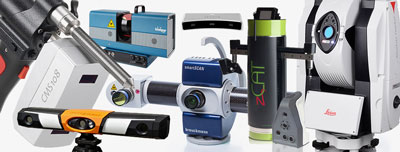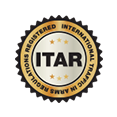
Laser scanning equipment is an essential tool in numerous environments. From engineering applications to medical and structural scans of buildings or historic sites, laser scanners are revered tools of industries that require high-quality, hyper-accurate digital renders of material objects. An example of this can be found in the construction industry, where a 3D laser scanner can produce digital scan data of entire structures with the application engineer being a safe distance away. Integrating laser scanning equipment into your toolkit is easy with expert guidance and service from Exact Metrology. We are excited to help you select and train to use the equipment that will accelerate your business and are here to share 10 important elements of 3D laser scanning equipment.
Laser Scanning Equipment Elements
The result of many years of development, 3D scanning technologies include machines that have multiple different elements that work together. Laser scanning equipment comes in many shapes and sizes, but these devices all feature two key components, hardware and software, that can be further categorized for a deeper understanding of their functionality.
Hardware
Laser scanner hardware refers to the material elements that make up the physical structure of the device. While hardware may seem like a simple thing, the thought behind the materials and design of 3D scanner hardware significantly contributes to the usability and effectiveness of the device. Every 3D scanner has a laser source, scan head, mechanical components, control unit, power supply, and calibration equipment.
-
Laser Source
Consisting of a laser diode, a control circuit, and a power supply, the laser source emits the laser light used for scanning an object or area.
-
Scan Head
To collect visual data, a laser beam moves across the surface of an object or space. The scan head moves the laser beam to enable this function and includes a mirror and detector to reflect and process what the laser light scans.
-
Mechanical Components
The 3D laser scanner includes mechanical components that keep it in place during use including a tripod, base plate, and clamps.
-
Control Unit
Without the control unit, a 3D scanner wouldn’t get you very far. The control unit includes corresponding hardware like a computer, screen, and keyboard for processing, display, and input.
-
Power Supply
3D scanners are electronic equipment. They can be corded and plugged into a typical outlet or they can run on a battery.
-
Calibration Equipment
Accuracy and precision are what 3D scanners are known for, and calibration equipment ensures that the scanner will create high-quality scans. Calibration equipment includes a target, for example, a scanning plate or other standardized object, to orient the scanner’s measuring tools.
-
Software program
3D scanning software is crucial to the usability of 3D laser scanning equipment. Without their software, scanners would be unable to create the digital prototypes and graphical models they are sought out for. There are as many different types of software as there are scanners, but every 3D scanner relies on a software program, data acquisition system, scanning software, and Global Positioning System (GPS).
Each 3D scanner relies on a corresponding software program. The software allows users to see the detailed scan in a graphical interface, stores the scan data in a database or pre-organized file structure, and processes data using algorithms.
-
Data acquisition system
The data acquisition system processes the high volume of data created during the scanning process. It features a memory source, a data processor, and an analog-to-digital converter. This allows the physical object being scanned to be translated into a digital double.
-
Scanning software
Scanning software is designed specifically to communicate with the laser during scanning so that it can record the visual data collected to create an accurate and precise rendering.
-
GPS
GPS systems communicate with satellites to pinpoint a precise location on Earth. A computer knowing the location of the 3D scanner is important for integrating scanned data with other data that is location-specific, like mapping applications.
3D Scanner Knowledge is Power
At Exact Metrology, we know that knowledge is power. Whether you are adapting a prototype, creating a unique medical device, or pioneering a design for something entirely new, knowing the exact details of your project are key. Laser scanning equipment will help you exponentially on your journey toward ever-increasing innovation, and knowledge of the key elements of these tools will help to advance your strategy regarding the acquisition of the best equipment for your needs. Between the expertise of our team and your expertise in your industry, there is no limit to what you can create. Reach out and contact us for laser scanning equipment and to see where your knowledge can take you!





